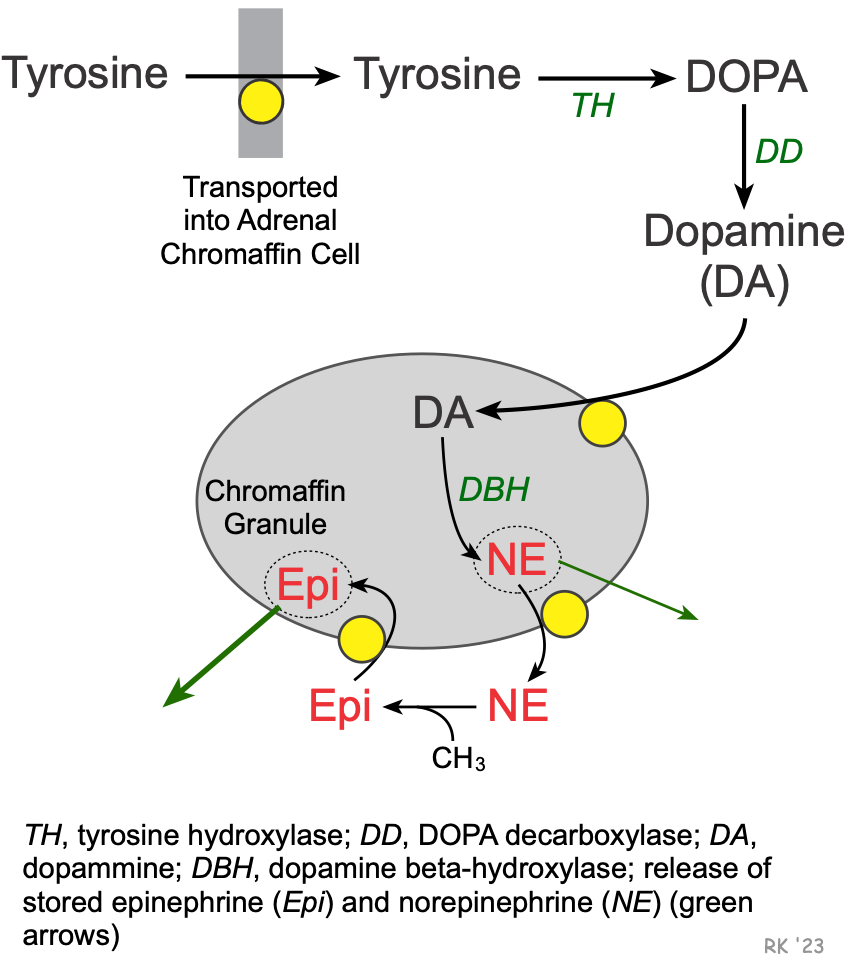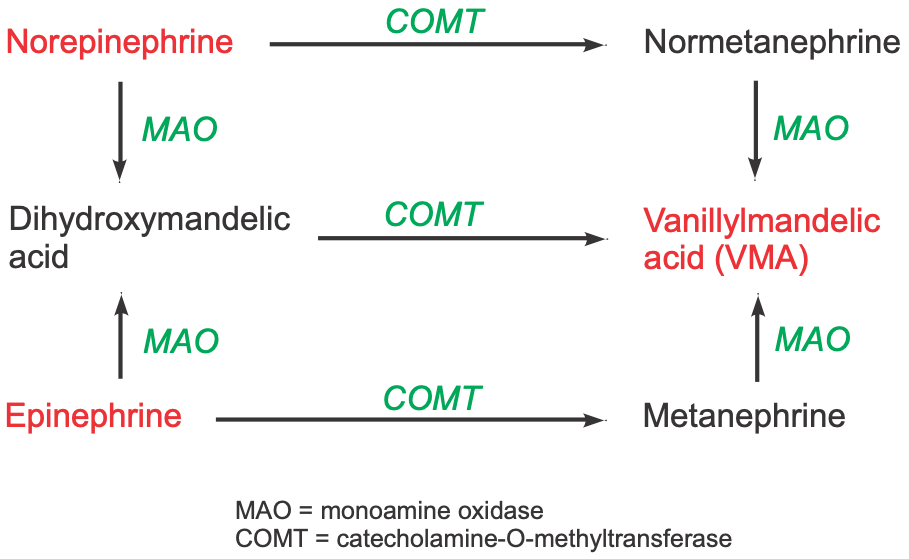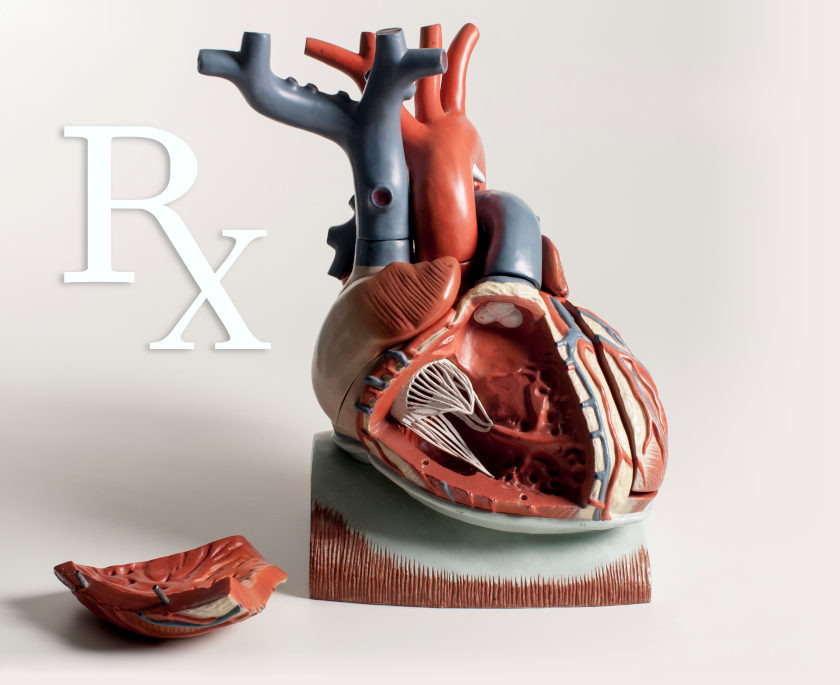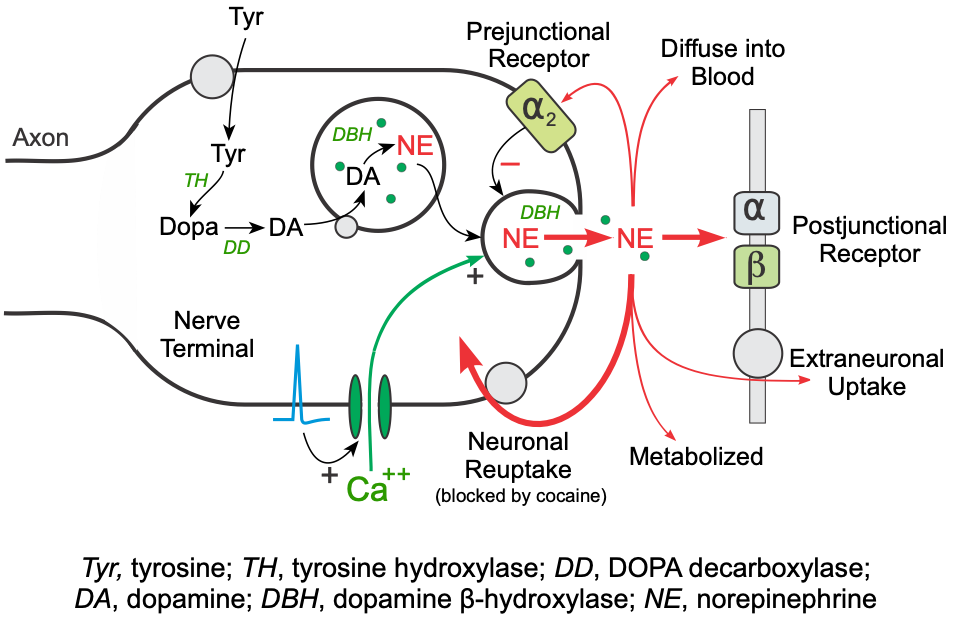Norepinephrine, Epinephrine and Acetylcholine - Synthesis, Release and Metabolism
Norepinephrine Synthesis and Release by Sympathetic Nerves
Norepinephrine (NE) is the primary neurotransmitter for postganglionic sympathetic adrenergic nerves. It is synthesized inside the nerve axon, stored within vesicles, then released by the nerve when an action potential travels down the nerve. Below are the details for release and synthesis of NE:
- The amino acid tyrosine is transported into the sympathetic nerve axon.
- Tyrosine (Tyr) is converted to DOPA by tyrosine hydroxylase (rate-limiting step for NE synthesis).
- DOPA is converted to dopamine (DA) by DOPA decarboxylase.
- Dopamine is transported into vesicles then converted to norepinephrine (NE) by dopamine β-hydroxylase (DBH); transport into the vesicle can by blocked by the drug reserpine.
- Action potentials traveling down the axon depolarize the membrane, which causes calcium to enter the axon.
- Increased intracellular calcium causes the vesicles to migrate to the axonal membrane and fuse with the membrane, which permits the NE to diffuse out of the vesicle into the extracellular (junctional) space. DBH, and depending on the nerve other secondary neurotransmitters (e.g., ATP), is released along with the NE.
- The NE binds to the postjunctional receptor and stimulates the effector organ response.
Norepinephrine Removal
The binding of NE to its receptor depends on the concentration of NE near the receptor. If the nerve stops releasing NE, then the NE concentration in the junctional cleft decreases and NE will leave the receptor. There are several mechanisms by which the norepinephrine is removed from the intercellular (junctional) space and therefore from the postjunctional receptor:
- Most (~90%) of the NE is transported back into the nerve terminal by a neuronal reuptake transport system. This transporter is blocked by cocaine; therefore, cocaine increases junctional NE concentrations by blocking its reuptake and subsequent metabolism. (This is a major mechanism by which cocaine stimulates the heart and raises blood pressure.)
- Some of the junctional NE diffuses into capillaries and is carried out of the tissue by the circulation. Therefore, high levels of sympathetic activation in the body increase the plasma concentration of NE and its metabolites.
- Some of the junctional NE is metabolized within the extracellular space before reaching the capillaries.
- A small amount of NE (~5%) is taken up by the postjunctional tissue (termed "extraneuronal uptake") and metabolized.
Epinephrine Synthesis and Release by the Adrenal Glands
 Epinephrine (Epi) is synthesized from NE within the medulla of adrenal glands, which are associated with the kidneys. Tyrosine is transported into adrenal chromaffin cells and acted upon by tyrosine hydroxylase to form L-DOPA, which then forms dopamine that is transported into chromaffin granules. NE then forms from the action of dopamine beta-hydroxylase and is transported out of the granule. An enzyme (phenylethanolamine-N-methyltransferase) adds a methyl group to the NE molecule to create Epi, which is transported back into the granule and then released into the blood perfusing the glands during preganglionic sympathetic nerve activation. Epi comprises about 80% and NE about 20% of the total catecholamine released by the adrenals.
Epinephrine (Epi) is synthesized from NE within the medulla of adrenal glands, which are associated with the kidneys. Tyrosine is transported into adrenal chromaffin cells and acted upon by tyrosine hydroxylase to form L-DOPA, which then forms dopamine that is transported into chromaffin granules. NE then forms from the action of dopamine beta-hydroxylase and is transported out of the granule. An enzyme (phenylethanolamine-N-methyltransferase) adds a methyl group to the NE molecule to create Epi, which is transported back into the granule and then released into the blood perfusing the glands during preganglionic sympathetic nerve activation. Epi comprises about 80% and NE about 20% of the total catecholamine released by the adrenals.
Norepinephrine and Epinephrine Metabolism
 NE and epinephrine are metabolized by catechol-O-methytransferase (COMT) and monoamine oxidase (MAO). The final product of these pathways is vanillylmandelic acid (VMA). This final product, along with its precursors normetanephrine and metanephrine, is measured in urine and plasma in the diagnosis of pheochromocytoma, which can cause severe hypertension and cardiac arrhythmias.
NE and epinephrine are metabolized by catechol-O-methytransferase (COMT) and monoamine oxidase (MAO). The final product of these pathways is vanillylmandelic acid (VMA). This final product, along with its precursors normetanephrine and metanephrine, is measured in urine and plasma in the diagnosis of pheochromocytoma, which can cause severe hypertension and cardiac arrhythmias.
Acetylcholine Synthesis and Metabolism
Acetyl-CoA is synthesized from pyruvate by mitochondria within cholinergic nerves. This acetyl-CoA combines with choline that is transported into the nerve axon to form acetylcholine (ACh). The enzyme responsible for this is choline acetyltransferase. The newly formed ACh is then transported into vesicles for storage and subsequent release, similar to what occurs for NE. After ACh is released, it is rapidly degraded within the synapse by acetylcholinesterase to generate acetate and choline.
Revised 11/30/2023

 Cardiovascular Physiology Concepts, 3rd edition textbook, Published by Wolters Kluwer (2021)
Cardiovascular Physiology Concepts, 3rd edition textbook, Published by Wolters Kluwer (2021) Normal and Abnormal Blood Pressure, published by Richard E. Klabunde (2013)
Normal and Abnormal Blood Pressure, published by Richard E. Klabunde (2013)
